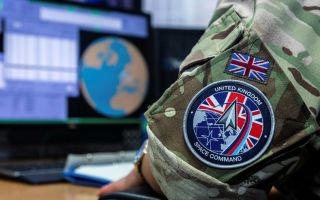Waterloo Medal Struck At Last
After a wait of nearly 200 years, the Allied powers who defeated Napoleon at the Battle of Waterloo were presented with the original commemorative Waterloo Medal at a ceremony held at Apsley House, official home of the Duke of Wellington. Waterloo 200, the Government-backed organisation overseeing the celebrations of the 200th anniversary of the Battle of Waterloo, has worked in partnership with The London Mint Office and Worcestershire Medal Service to have the Medal produced for the very first time in its original size. The Medal was originally commissioned in 1815 and designed by renowned engraver Benedetto Pistrucci - but never struck.
Their Excellencies Dr Emil Brix, Austrian Ambassador, Dr Alexander Yakovenko, Russian Ambassador, and Ms Tania Freiin von Uslar-Gleichen, Deputy Head of Mission at the German Embassy, each received the Pistrucci Medal on behalf of their country. These were presented to them by Lord Douro, son of the Duke of Wellington, following a number of talks including an account of the significance of the Battle of Waterloo and the Allied co-operation by historian Peter Snow.
Angela Pistrucci, 3rd great niece of the late engraver, Sir Evelyn Webb-Carter on behalf of the Waterloo Association, the Royal Mint Museum and the Waterloo Committee from Belgium were also presented with the Medal as well as Lord Douro himself, who received it on behalf of the Duke of Wellington.
Her Majesty the Queen will also be receiving the Waterloo Medal which will be presented to her on a later date.
In addition, His Excellency Mr Guy Trouveroy, Belgian Ambassador, and Mrs Margriet Leemhuis, Deputy Head of Mission at the Dutch Embassy, each received a commemorative silver Waterloo Campaign Medal on behalf of their country for the essential roles their nations also played in the Battle of Waterloo.
The commemorative Pistrucci Medal was commissioned only 10 days after the Allied victory over Napoleon in Waterloo by the first Duke of Wellington's brother, Sir William Wellesley Pole, who tasked Pistrucci with its design and production.
It took Pistrucci over 30 years to complete the moulds, known as dies, not only due to the mammoth dimensions of the Medal, which is 139mm in diameter, much larger than any previously created, but also due to the complexity and intricacy of the design itself. The Medal features on one side the four busts of the Allied rulers each wearing a laurel wreath, surrounded by allegorical scenes representing the battle and the peace that followed. On the reverse the Duke of Wellington and Prince Blücher, the Prussian Field Marshal, are depicted riding their horses into battle, while the Gigantomachy - the Greek mythological battle between the Giants and the gods of Olympia - is featured around the central figures.









